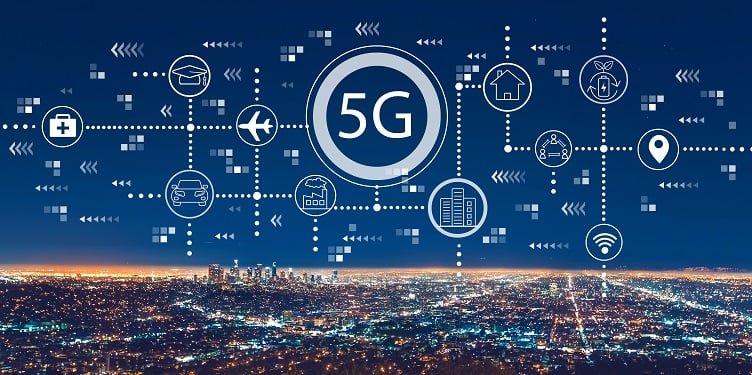Exploring the Impact of 5G on Network Technology
The advent of 5G technology represents a significant leap forward in network technology, promising to reshape various aspects of connectivity and communication. With its potential to offer faster speeds, lower latency, and greater capacity, 5G is poised to drive innovation across multiple sectors. This article explores the impact of 5G on network technology, highlighting its benefits, challenges, and future implications.

Transformative Speed and Latency
Ultra-Fast Speeds: One of the most notable benefits of 5G is its ability to deliver speeds up to 100 times faster than its predecessor, 4G. This increased speed enables quicker data transfers, smoother video streaming, and faster downloads and uploads. For businesses and consumers alike, 5G facilitates real-time applications and high-bandwidth activities, enhancing overall user experience.
Low Latency: 5G significantly reduces latency, the delay between sending and receiving data. With latency as low as 1 millisecond, 5G supports applications requiring near-instantaneous communication, such as autonomous vehicles, remote surgeries, and real-time gaming. This improvement in latency is crucial for applications that depend on real-time data processing and response.
Enhanced Network Capacity and Efficiency
Increased Capacity: 5G networks are designed to handle a vast number of connected devices simultaneously. The technology employs advanced techniques such as network slicing and massive MIMO (multiple input, multiple output) to manage high traffic volumes efficiently. This increased capacity supports the growing number of IoT (Internet of Things) devices and smart applications that require reliable connectivity.
Network Slicing: Network slicing allows operators to create multiple virtual networks within a single physical 5G infrastructure. Each slice can be customized to meet specific requirements, such as high-speed connectivity for video streaming or low-latency communication for critical applications. This flexibility enables operators to provide tailored services and optimize network performance for different use cases.
Enabling New Technologies and Applications
Internet of Things (IoT): 5G is a game-changer for IoT, supporting the seamless connectivity of billions of devices. The technology’s high capacity and low latency enable the deployment of advanced IoT applications, including smart cities, industrial automation, and connected health devices. 5G facilitates real-time data exchange and control, driving innovation in various sectors.
Augmented Reality (AR) and Virtual Reality (VR): The high speeds and low latency of 5G enhance the experience of AR and VR applications. These immersive technologies require substantial bandwidth and minimal delay to function effectively. 5G’s capabilities enable more interactive and realistic AR/VR experiences, with applications in gaming, training, education, and remote collaboration.
Autonomous Vehicles: 5G plays a critical role in the development of autonomous vehicles by providing the low-latency communication needed for real-time data exchange between vehicles, infrastructure, and cloud services. This capability supports advanced driver-assistance systems (ADAS) and enables safer and more efficient autonomous driving.
Addressing Deployment Challenges
Infrastructure Requirements: The deployment of 5G requires significant infrastructure upgrades, including the installation of new base stations and the integration of advanced technologies. The higher frequency bands used by 5G have shorter range and lower penetration, necessitating a denser network of small cells and distributed antenna systems.
Cost Considerations: Implementing 5G infrastructure involves substantial investment in both technology and deployment. Operators must balance the costs of upgrading networks with the potential revenue from new services and applications. Additionally, businesses and consumers may face costs associated with adopting new 5G-enabled devices and services.
Spectrum Management: 5G utilizes a wide range of frequency bands, including low, mid, and high bands (millimeter waves). Efficient spectrum management is crucial to maximize the performance and coverage of 5G networks. Regulators and operators must work together to allocate spectrum effectively and avoid interference.
Future Implications and Developments
Integration with Emerging Technologies: The future of 5G involves integrating with other emerging technologies, such as artificial intelligence (AI), machine learning, and edge computing. AI and ML can enhance network management and optimization, while edge computing can further reduce latency and support real-time applications.
Sustainable Practices: As 5G networks are deployed, there is a growing focus on sustainability and energy efficiency. Efforts to develop energy-efficient network equipment, optimize resource usage, and minimize environmental impact are essential to ensure that the benefits of 5G are realized in a sustainable manner.
Global Connectivity: 5G has the potential to enhance global connectivity by bridging digital divides and providing high-speed internet access in underserved regions. The technology’s ability to deliver reliable connectivity in remote and rural areas can drive economic development and improve access to digital services worldwide.
Conclusion
The impact of 5G on network technology is profound, offering transformative benefits such as ultra-fast speeds, low latency, and increased capacity. By enabling new applications and technologies, 5G is driving innovation across various sectors, including IoT, AR/VR, and autonomous vehicles. While deployment challenges and costs must be addressed, the potential of 5G to enhance connectivity and support emerging technologies positions it as a cornerstone of the future digital landscape. As 5G continues to evolve, it will shape the way we interact, work, and live, ushering in a new era of network technology.



